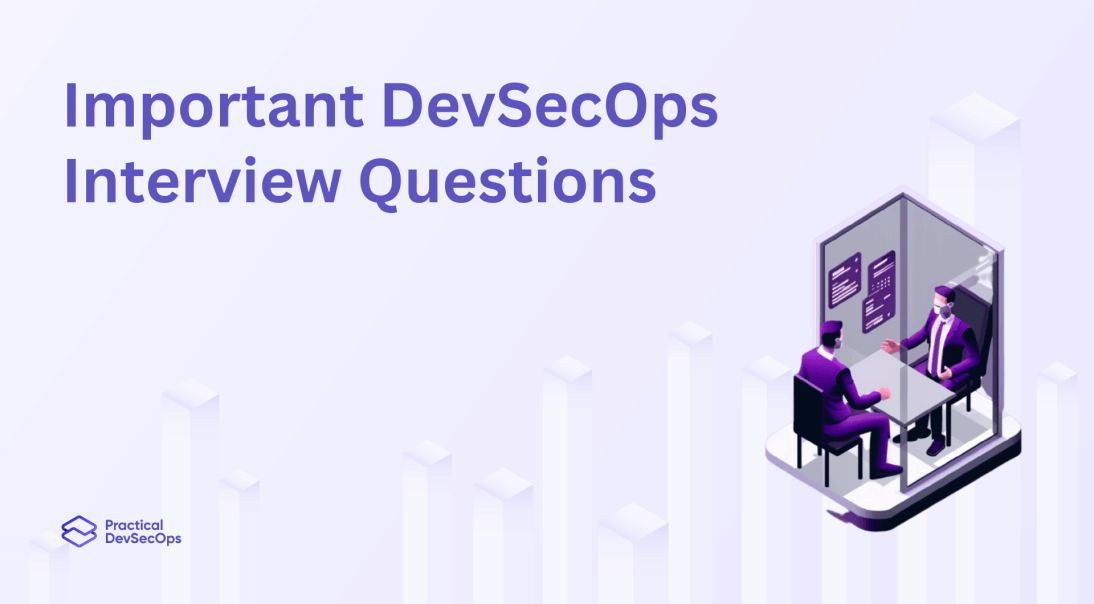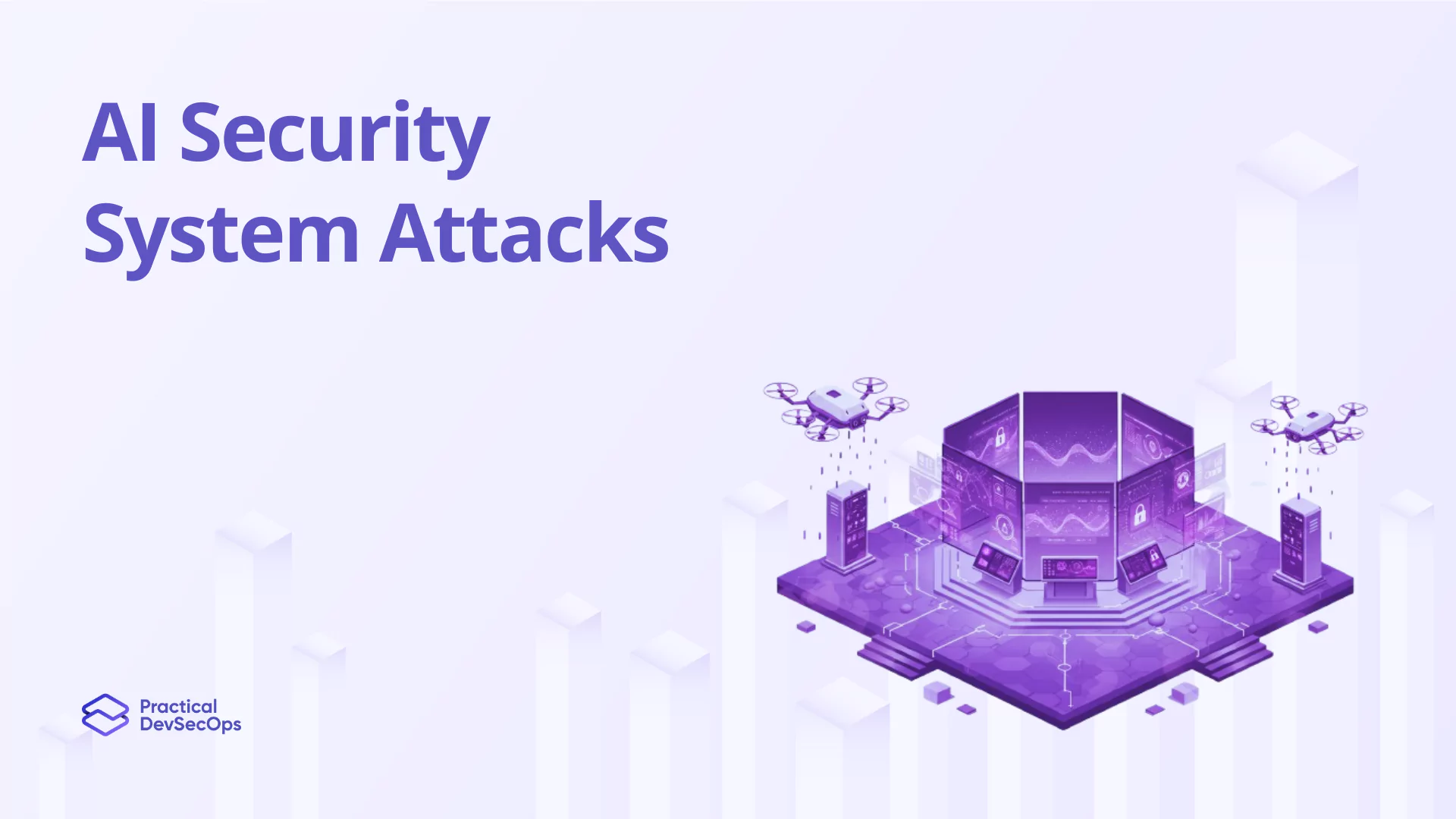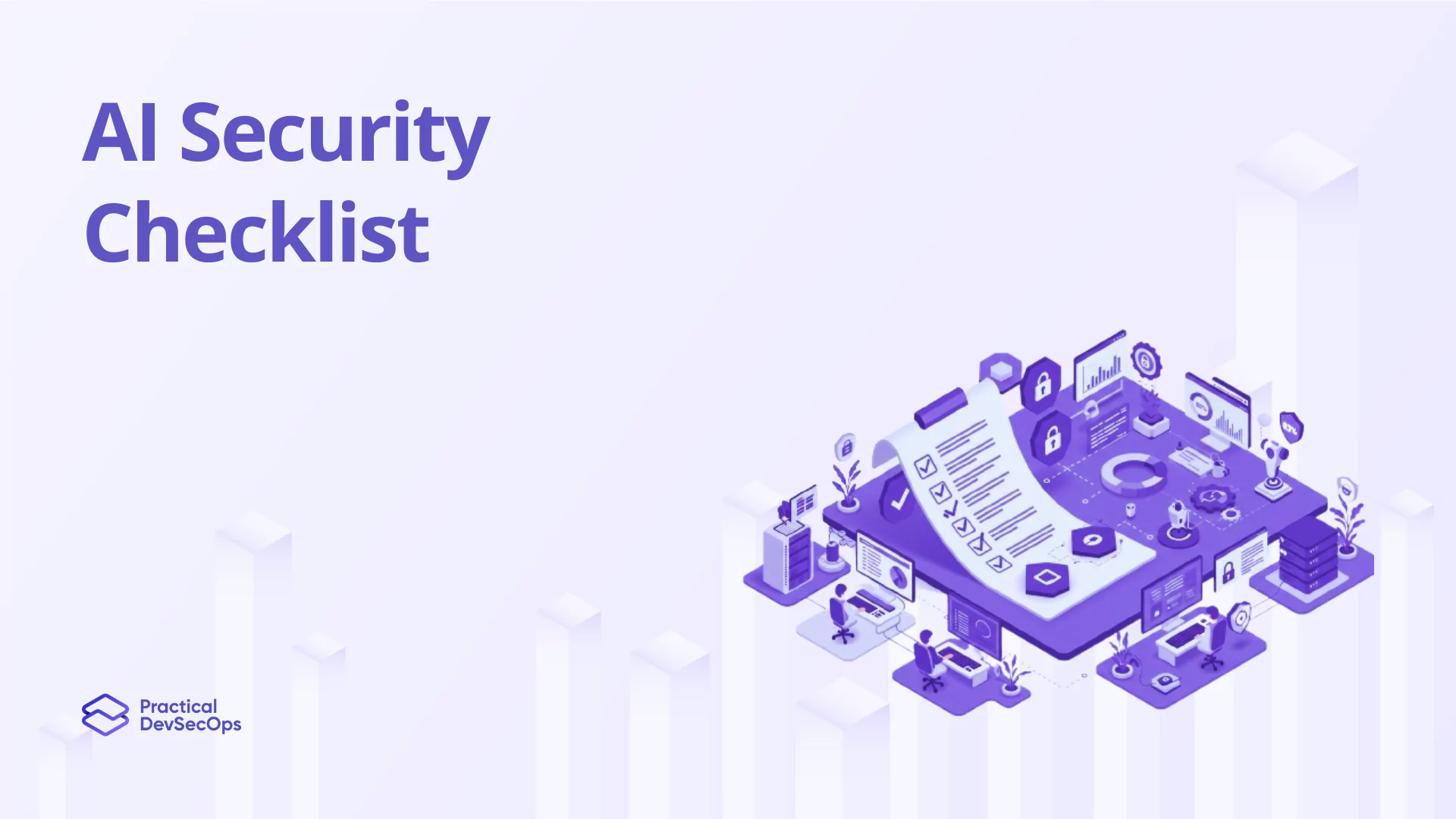As DevSecOps grows in importance, the need for people with the right skills to aid an organization in maneuvering the landscape grows too. To get promising career opportunities in DevSecOps, professionals need to answer some important questions on DevSecOps during the time of interview. Let’s get started:
TL;DR
Ace your DevSecOps interview with over 50 + DevSecOps interview questions and answers, designed to help you land top jobs in 2025. The guide covers key DevSecOps topics like integrating security into CI/CD pipelines, threat modeling, incident response, vulnerability scanning, and compliance. It also dives into security tools, cloud security, container security, and automation best practices in DevSecOps. Boost your expertise in DevSecOps and enhance your interview readiness with these expert insights. Ready to take the next step in your career? Enroll in our Certified DevSecOps Professional(CDP) and Certified DevSecOps Expert(CDE) certification courses today!

Important DevSecOps Interview Questions and Answers – Updated
- How do you prioritize security within the DevOps workflow?
- Differentiate between DevOps and DevSecOps?
- What do you think are the key cultural aspects of DevSecOps?
- How do you implement security in a CI/CD pipeline?
- What are the core principles of DevSecOps?
- How do you promote collaboration and communication in a DevSecOps culture?
- What are the main challenges faced while implementing SCA, and how can they be addressed in a DevSecOps environment?
- Why do you think it is essential to prioritize SCA first in DevSecOps Cycle?
- What are some of the benefits of SAST in the DevSecOps Process?
- How does compliance of code help in the DevSecOps process?
- How would you assess the effectiveness of DevSecOps implementation across the organization?
- What are some common security tools used in DevSecOps?
- How do you approach incident response in a DevSecOps environment?
- What is Infrastructure as Code (IaC), and why is it important in DevSecOps?
- How do you ensure that compliance requirements are met in a DevSecOps
- Why is logging important in DevSecOps?
- How do you ensure that secrets are protected within your DevSecOps pipeline?
- How do you approach threat modeling?
- What should be included in a threat model?
- What is the difference between threat modeling and risk assessment?
- What is the difference between a vulnerability scan and a penetration test?
- Why is it important to have security tool output in a machine-readable format?
- What is the difference between encryption and hashing?
- How do you address security issues in a cloud environment?
- What are some weaknesses of DAST compared to other security methods?
- How do you ensure the security of APIs in a DevSecOps environment?
- What experience do you have with security automation tools and techniques?
- How do you integrate security into the software development lifecycle (SDLC)?
- What strategies do you use for secure configuration management?
- How do you handle security patch management in a DevSecOps pipeline?
- What are some best practices for securing containers and microservices?
- How do you ensure the security of data at rest and in transit?
- What experience do you have with chaos engineering and resilience testing?
- How do you handle security monitoring and incident response in DevSecOps?
- What metrics and KPIs would you use to measure the success of a DevSecOps program?
- How do you implement and automate security controls in your CI/CD pipeline?
- How do you implement security controls in a cloud-native environment using service meshes?
- How do you implement IaC security scanning?
- What strategies do you use for securing serverless functions?
- How do you implement supply chain security?
- What’s your approach to API security testing automation?
- How do you integrate mutation testing?
- How do you implement security monitoring and alerting?
- How do you handle automated incident response?
- How do you automate compliance checks?
- How do you handle secrets management?
- How do you handle security debt tracking?
- What tools do you use for automated threat hunting?
- How do you balance security requirements with development velocity?
- Walk me through your approach to container security?
Crack your DevSecOps Interviews with Certified DevSecOps Professional Course
How do you prioritize security within the DevOps workflow?
Integrating security throughout the DevOps workflow is essential, starting with the incorporation of security requirements into user stories and extending to the timely execution of security testing during the development process. Regular security audits are also crucial to maintaining the security of our systems. This approach demands a persistent emphasis on measuring and enhancing security metrics, which fosters collaboration across teams and facilitates the automation of tools wherever feasible. 
Also Read, Integrating STRIDE Threat Model with DevOps
Differentiate between DevOps and DevSecOps?
DevOps and DevSecOps are related but different sets of software development and delivery practices. DevOps is a set approach that thrives on collaboration and communication between development and operational teams. On a similar note, DevSecOps extends DevOps by including security practices in software development throughout its lifecycle.
DevSecOps actively integrates security practices at every stage of development, with a focus on finding and fixing security concerns at the various stages of the software development life cycle, starting from design and carrying through the deployment process. But whereas DevOps is thinking of smooth and continuous delivery, DevSecOps refers to the smooth and continuous delivery of secure products.
What do you think are the key cultural aspects of DevSecOps?
The key principles will be culture, automation, measurement, and sharing (CAMS), with the key to all being culture. If at all we don’t have the right culture, then everything else will be bound to fall apart. These are, if not observed, bound to bring forth their effects.
How do you implement security in a CI/CD pipeline?
Security can be incorporated into a CI/CD pipeline by implementing the following practices:
- Automate security testing using tools like static code analysis and dynamic application security testing (DAST)
- Implement secure coding practices during the development stage
- Use container security checks to ensure that images are free from vulnerabilities
- Monitor the pipeline for security issues
- Integrate security testing with continuous integration, delivery, and deployment processes.
What are the core principles of DevSecOps?
The core principles of DevSecOps are:

- Automation of security controls
- Continuous security testing
- Security as code
- Shared responsibility for security
- Agile security processes
How do you promote collaboration and communication in a DevSecOps culture?
The whole concept of DevSecOps practices talks about collaboration and communication. This is in support of cross-functional teams, where a combination of members from development, security, and operations has been said to lead to more collaboration than a traditional set-up. This can be done by holding regular team meetings and stand-ups that will facilitate the free flow of communication among team members and ensure that all members of the team are posted regarding the status and security apprehensions within the project. In communication, they will employ various discussion tools. Among them is the use of chat applications and project management software.
What are the main challenges faced while implementing SCA, and how can they be addressed in a DevSecOps environment?
This may require sensitizing the developers to the use of SCA and the likely risks that accompany the vulnerabilities of open-source components. This calls for proper training programs and awareness of the significance attached to using the SCA tools. In their turn, legacy applications or code may have lots of dependencies, including outdated and even vulnerable open sources.
This needs to be addressed using analysis and dependency management tools that ensure the use of only secure versions of those libraries and components. It’s kind of boring to evaluate the transitive dependencies for vulnerabilities, mostly because most dependencies use libraries, which are in turn used in others, and their existence is something that can be known by the developers, not even in a majority of cases. This exposes the organization to vulnerabilities that might be exploited by the adversaries.
Also Read, DevSecOps Implementation Challenges and Top Solutions
Why do you think it is essential to prioritize SCA first in DevSecOps Cycle?
We do SCA early in the process, following the shift-left approach. This assists in identifying and fixing vulnerabilities at the earliest possible time to cut down on technical debts and supply chain attacks and help improve the security posture of the application in the long run. SCA will, of course, have far fewer false positives than some other technologies, for example, Dynamic Application Security Testing, because it only has to understand your code dependencies. This, in turn, assures that only the relevant vulnerabilities are flagged and, subsequently, reduces development team work in such a way that they will be more effective in vulnerability mitigation.
The Certified DevSecOps Professional (CDP) course can be highly valuable for your DevSecOps interview:
- Industry Recognition: The CDP certification is a well-recognized and respected certification in the DevSecOps field
- Real-World Ready: Equips you with practical skills through hands-on labs.
- Comprehensive Knowledge: Covers key DevSecOps areas, demonstrating breadth and depth.
- Stand Out from the Crowd: Gives you an edge in a competitive job market.
Remember, experience reigns supreme, but the Practical DevSecOps certifications give you an advantage!

What are some of the benefits of SAST in the DevSecOps Process?
SAST is one of those very important integral parts of the DevSecOps process. If done at an early stage in the development process, SAST may help in detecting possible vulnerabilities that can be mitigated or eradicated after code compilation or execution. This saves time and other resources because the late discovery of vulnerabilities in the development process usually mandates lots of rework or even from-scratch rewriting of code. Furthermore, getting started with SAST is simple, as it performs both data flow and control flow analysis.

Download Free E-book on SAST Implementation Guide
How does compliance of code help in the DevSecOps process?
Compliance as Code is a methodology that utilizes code and automation to enforce compliance with security policies and industry regulations. This approach can help improve the security of the DevSecOps process in various ways, including Automation, Integration, and scalability. Overall, Compliance as Code helps implement a proactive and continuous security approach in DevSecOps, allowing for standardization in security practices, improving security through automation, managing costs, and maintaining security compliance across diverse infrastructure and platforms.
How would you assess the effectiveness of DevSecOps implementation across the organization?
It runs down to several key performance indicators: the assessment of how effective it can be to implement this right across an organization, such as security metrics, code quality, collaboration and communication, automation, and time to market. Generally, assessment of DevSecOps implementation involves ongoing tracking of several aspects and metrics from a temporal perspective. This will also help understand the needs for improvement, thus allowing us to refine DevSecOps implementations and better adapt to the specific security goals and objectives the organizations have in place.
Also read, How to Become a Skilled DevSecOps Engineer?
What are some common security tools used in DevSecOps?
Answer: Common security tools used in DevSecOps include:
- Static Application Security Testing (SAST) tools
- Dynamic Application Security Testing (DAST) tools
- Web Application Firewalls (WAFs)
- Container security tools
- Vulnerability management tools
Also Read, Best DevSecOps Tools in 2025
How do you approach incident response in a DevSecOps environment?
Here’s a summary of the DevSecOps incident response plan :
- Prepare by building an incident response team, defining roles, and establishing communication channels.
- Identify the incident’s nature, scope, and relevant details.
- Contain the incident by isolating it and mitigating any damage.
- Analyze the incident to determine whether it was actually caused or not.
- Recover by restoring affected systems to normal operations.
- Learn lessons by reviewing and identifying areas for improvement in the incident response process.
What is Infrastructure as Code (IaC), and why is it important in DevSecOps?
Infrastructure as Code (IaC) is the practice of defining and managing infrastructure using code rather than manual processes. IaC plays a vital role in DevSecOps. It enables automated configuration, scaling, and monitoring of infrastructure and applications, minimizing manual configuration errors and making security easier to manage across diverse systems.
How do you ensure that compliance requirements are met in a DevSecOps environment?
Compliance requirements can be met in a DevSecOps environment by implementing the following:
- Automated compliance checks as code in the CI/CD pipeline
- Automated compliance documentation using tools like Chef Compliance or InSpec
- Continuous Compliance Management by integrating compliance audit into continuous monitoring
- Security and compliance-as-code by automatically configuring, securing, and testing configurations and operations
- Continuous compliance assessment using tools like Aqua Security, which provides a holistic approach that incorporates both DevOps and security insights.
Why is logging important in DevSecOps?
Logging has immense importance in DevSecOps because it records activities and the nature of actions occurring in the system. This kind of information is available to enable the discovery of security threats, the detection of anomalies, and, finally, to react to security incidents in time. Proper log management also aids in responding to regulatory compliance requirements such as PCI-DSS, HIPAA, and GDPR.
How do you ensure that secrets are protected within your DevSecOps pipeline?
The following methods could be used to ensure secret protection in the DevSecOps pipeline:
- Implementing a Secret Management-platform like HashiCorp Vault or Ansible Vault that keeps secrets private, accessible, and managed using identity-based access control
- Creating encrypted values for secrets like API keys, tokens, certificates, and database credentials, stored manually or within a source code management repository
- Segregating sensitive resources into different environments, then applying least privilege principles, for example, preventing the use of root access or privileged permissions, etc.
How do you approach threat modeling?
Threat modeling approaches generally address what asset needs protecting, more specifically what data or functionality, and who would be the potential attackers to target the said asset. Identify the most likely threats and attack vectors using techniques such as injection and denial-of-service. Analyze the risks associated with each threat and prioritize them based on their likelihood and impact. Once risks have been prioritized, identify and implement controls to mitigate risks. Controls can range from architectural changes to code-level fixes to security awareness training for developers.“ 
Download our Free E-book on Agile Threat Modeling
What should be included in a threat model?
Answer: A threat model should include the following information:
- Assets and their values
- Threats, their risks, and likelihoods
- Attack Surface, which outlines all possible methods of attack
- Entry points from an attacker’s perspective
- Risk-mitigation strategies and safeguard planning.
What is the difference between threat modeling and risk assessment?
Threat modeling involves identifying potential threats and vulnerabilities within an application or system. In contrast, risk assessment evaluates the severity and likelihood of identified risks, focusing on understanding their overall impacts in a proportionate manner.
Also Read, Threat Modeling vs Risk Assessment: What is the difference?
What is the difference between a vulnerability scan and a penetration test?
A vulnerability scan is an automated approach that scans and assesses systems and applications for technical weaknesses and vulnerabilities. A penetration test involves ethical hacking techniques by using human intelligence to simulate real-world attacks, identify potential vulnerabilities and gauge the effectiveness of security defenses in place.
Also Read Threat Modeling vs Penetration Testing
Why is it important to have security tool output in a machine-readable format?
This is very critical in the sense that it allows automation and streamlines processes if it lets the computer read and interpret the data instead of giving leeway to human judgment. This will be made possible through the use of a machine-readable format for greater consistency and standardization in the various systems and platforms, thereby helping in auditing, comparison, and ensuring they all adhere to similar standards and policies.
What is the difference between encryption and hashing?
Transforming the readable text into a confused, meaningless jumble by using algorithms and keys is a very secure transformation process. This process allows only authorized users who have the decryption key to bring it back into its original format. On the other hand, hashing is the processing of data into fixed-length strings of any size through some mathematical algorithm but is not reversible in the sense that it is irrecoverable from the hash. This distinction underscores the unique purposes and applications of encryption and hashing in data security.
How do you address security issues in a cloud environment?
Securing a cloud environment requires a multi-faceted approach, including:
- Implementing access controls and permissions management
- Securing network/configurations
- Encrypting data in transit and at rest
- Monitoring service usage and logs
- Patching and removing vulnerabilities as soon as possible
What are some weaknesses of DAST compared to other security methods?
DAST is performed later in the development process, meaning vulnerabilities may not be identified until after the code has been deployed to a test or production environment. This can increase the costs and time required to remediate vulnerabilities and negatively impact the application’s overall security. Dynamic Analysis is prone to lack of coverage because of its inability to crawl heavy Javascript frameworks. This can result in vulnerabilities going undetected, as attackers may exploit untested areas of the application.
DAST, performed later in development, can delay vulnerability identification until after deployment, increasing costs and impacting security. Its lack of coverage for heavy JavaScript frameworks may lead to undetected vulnerabilities exploited by attackers in untested areas. DAST’s issue with false positives or negatives can waste time and resources on non-existent or missed vulnerabilities. Unlike SAST, it cannot analyze source code directly, making it harder to identify and address vulnerabilities’ root causes.
How do you ensure the security of APIs in a DevSecOps environment?
Some key points to ensure API security in a DevSecOps environment:
- Use secure protocols like HTTPS and TLS for all API communications
- Implement robust authentication and authorization mechanisms
- Validate and sanitize all input to protect against injection attacks
- Regularly test APIs for vulnerabilities using SAST, DAST, and pen testing tools
- Monitor APIs for anomalous behavior and respond quickly to incidents
What experience do you have with security automation tools and techniques?
Experience with security automation tools and techniques is critical for DevSecOps roles. Track down candidates who are familiar with:
- SAST tools like SonarQube for static code analysis
- DAST tools like OWASP ZAP for dynamic testing
- SCA tools like Snyk for open source vulnerability scanning
- Container security tools like Aqua and Twistlock
- Infrastructure as Code scanners like Checkov
How do you integrate security into the software development lifecycle (SDLC)?
To properly integrate security into the SDLC in a DevSecOps model:
- Involve the security team from the initial requirements gathering stage
- Conduct threat modeling exercises during the design phase
- Implement secure coding practices and code reviews during development
- Perform comprehensive security testing before any release
- Practice continuous security monitoring and rapid incident response
What strategies do you use for secure configuration management?
Some key strategies for secure configuration management include:
- Maintaining hardened, approved configuration baselines
- Automating config management using tools like Ansible or Puppet
- Implementing the least privilege access and secure default settings
- Regularly auditing configs and fixing any drift from baselines
How do you handle security patch management in a DevSecOps pipeline?
Effective patch management requires:
- Continuously monitoring for new vulnerabilities in all dependencies
- Automating the patching process as much as possible
- Prioritizing patches based on risk severity and exposure
- Thoroughly testing all patches before production rollout
What are some best practices for securing containers and microservices?
To secure containers and microservices, best practices include:
- Using minimal base images and avoiding unnecessary components
- Scanning all container images for known vulnerabilities
- Implementing network segmentation and applying the least privilege
- Securing service-to-service communication with mTLS or a service mesh
- Monitoring container runtimes for suspicious activity
How do you ensure the security of data at rest and in transit?
Data security requires encryption of sensitive data at rest and in transit. Use strong encryption algorithms for data at rest, and secure protocols like TLS for data in motion. Access to sensitive data should be tightly controlled and audited. Comply with relevant regulations like GDPR and HIPAA.
What experience do you have with chaos engineering and resilience testing?
Chaos engineering intentionally introduces failures to test system resilience. Tools like Chaos Monkey or Gremlin help automate failure injection. This validates that monitoring, alerting, and failover mechanisms work as expected. The goal is to continuously improve the system’s ability to handle failures gracefully.
How do you handle security monitoring and incident response in DevSecOps?
Security monitoring and incident response are critical in DevSecOps. Best practices include:
- Centralized logging and monitoring across the entire pipeline
- Using SIEM and EDR tools to detect threats in real-time
- Having a well-defined and practiced incident response plan
- Automating containment and recovery actions where feasible
- Conducting blameless post-mortems to identify improvements
What metrics and KPIs would you use to measure the success of a DevSecOps program?
Some key metrics and KPIs to track DevSecOps success:
- Reduction in number and severity of vulnerabilities over time
- Faster mean time to detect (MTTD) and respond to (MTTR) incidents
- Percentage of security tests and processes that are automated
- Adherence to relevant security and compliance standards
- Developer feedback on the seamlessness of security integration
How do you implement and automate security controls in your CI/CD pipeline?
A DevSecOps Engineer should implement security controls at multiple pipeline stages. They typically use pre-commit hooks for secrets scanning with GitGuardian, run SAST using SonarQube during build, perform container scanning with Trivy, and conduct dependency scanning using OWASP Dependency Check. Post-deployment should include automated DAST using OWASP ZAP. All findings should be automatically categorized and tracked in Jira.
How do you implement security controls in a cloud-native environment using service meshes?
An effective approach involves using Istio for service mesh implementation. The engineer should enforce mTLS between services, implement rate limiting, and configure network policies for microsegmentation. Service-to-service authentication should be handled through Istio’s AuthorizationPolicy with JWT validation. Traffic monitoring can be accomplished through Kiali.
How do you implement IaC security scanning?
Engineers should utilize tools like Checkov and Terraform-compliance for static analysis of Infrastructure as Code. These should run both pre-commit and in CI/CD. For AWS resources, AWS Config with custom rules is recommended. Vulnerabilities should be automatically categorized, with critical and high issues blocking deployments while medium and low are tracked for review.
What strategies do you use for securing serverless functions?
A comprehensive serverless security strategy should focus on four areas: implementing least-privilege IAM roles using AWS IAM analyzer, encrypting environment variables with KMS, setting function-level security controls, and maintaining updated runtime dependencies through AWS Lambda layers.
How do you implement supply chain security?
Supply chain security requires a defense-in-depth approach. Engineers should maintain a private artifact registry, implement SHA-256 verification for dependencies, use Software Bill of Materials (SBOM) for tracking, and perform continuous monitoring with tools like Snyk. All third-party packages should undergo automated security scanning before approval.
What’s your approach to API security testing automation?
API security testing should include static analysis using OpenAPI spec validation, dynamic testing with OWASP ZAP API scan, and contract testing using Pact. Custom scripts should test business logic vulnerabilities. Results need to be integrated into the CI/CD pipeline with automated blocking for critical findings.
How do you integrate mutation testing?
Engineers should employ tools like PIT Mutation Testing for Java and Stryker for JavaScript. These should run in nightly builds to avoid pipeline delays. A minimum mutation score threshold of 80% should be maintained, with improvements tracked through metrics dashboards.
How do you implement security monitoring and alerting?
Security monitoring should utilize the ELK stack for log aggregation, Prometheus and Grafana for metrics, and Falco for runtime security monitoring. Critical alerts should be routed to PagerDuty and security channels. Key metrics should include critical vulnerabilities, mean time to remediation, and security test coverage.
How do you handle automated incident response?
Incident response can be automated using tools like Cortex XSOAR. When incidents are detected, automatic containment actions should trigger based on playbooks. The system should correlate data from multiple sources and initiate appropriate response workflows.
How do you automate compliance checks?
Compliance automation should utilize tools like Chef InSpec with custom profiles based on CIS benchmarks. Daily compliance checks should feed results into metrics and alerting systems. Non-compliant resources should be automatically tagged for review, with critical violations triggering immediate notifications.
How do you handle secrets management?
Secrets management should be centralized using HashiCorp Vault, integrated with cloud KMS systems. Secrets should rotate automatically every 30 days, with dynamic secrets using short TTLs for application access. All secret access should be logged and monitored.
How do you handle security debt tracking?
Security debt should be managed through a dedicated backlog, prioritized using risk-based scoring combining CVSS scores and business impact. Teams should allocate sprint capacity to security debt reduction with progress tracked through metrics.
What tools do you use for automated threat hunting?
Threat hunting should combine tools like Osquery for endpoint visibility, Suricata for network monitoring, and custom detection rules in SIEM. Automated hunts should run daily, with results feeding into threat intelligence platforms.
How do you balance security requirements with development velocity?
The balance should be achieved through automation and developer enablement. Security tools should integrate into IDEs for instant feedback. Teams should maintain golden templates and secure components for reuse, with security champions providing guidance.
Walk me through your approach to container security?
Container security requires a layered approach: base image scanning with Trivy in CI/CD, runtime protection using Falco rules, pod security policies and network policies in Kubernetes, and regular vulnerability scanning of running containers using tools like Aqua Security.
Also, Read more about SAST here
Conclusion
In summary, the preparation of DevSecOps interview questions is something that every individual who would like to work in security should do. Being ready to answer these and other most common questions at a DevSecOps interview may help professionals impress potential employers and secure jobs in this dynamic, ever-growing field. Everybody can be able to develop from the ground up all the necessary skills that come in handy with DevSecOps success and, eventually, sky up their careers to the next level by being updated in the current security practices and trends.
Practical DevSecOps offers an excellent Certified DevSecOps Professional (CDP) course with hands-on training through browser-based labs, 24/7 instructor support, and the best learning resources to upskill DevSecOps. Start your journey mastering DevSecOps today with Practical DevSecOps!







0 Comments